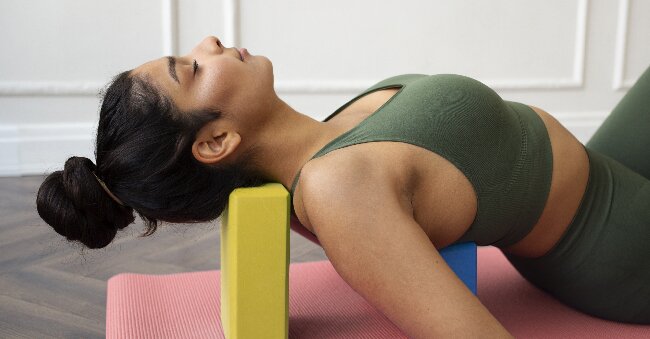
5 Essential Tips for Using Yoga Bricks to Enhance Your Practice
Looking to enhance a yoga practice and deepen poses? Yoga bricks may be a helpful prop to consider.
This guide explores what yoga bricks are, their benefits, and how they can assist in improving alignment and flexibility.
From selecting the appropriate yoga bricks to integrating them into a practice, this guide covers all the essential information to safely and effectively utilize this versatile prop.
What Are Yoga Bricks?
Yoga bricks are versatile props commonly used in yoga practice to improve alignment, offer support, and enhance poses.
These props are essential tools in aiding practitioners, particularly novices, in achieving correct alignment and stability in a variety of yoga poses. By utilizing yoga bricks, individuals can adjust poses to their flexibility and strength capacities, allowing for gradual advancement in their practice. The sturdy support provided by yoga bricks aids in preserving balance and minimizing strain on joints to prevent injury. These props can be placed under various body parts strategically to enable a deeper stretch and raise the difficulty level of poses.
Why Use Yoga Bricks?
The use of yoga bricks in a yoga practice can provide a variety of benefits for practitioners at all levels.
These versatile props can help improve flexibility by offering support in challenging poses, allowing individuals to safely extend their stretches beyond what they could achieve on their own. Beginners can benefit from the added stability that yoga bricks provide, helping them gain confidence as they work on mastering different postures. For more advanced yogis, incorporating yoga bricks can assist in deepening poses, promoting proper alignment, and facilitating a more thorough exploration of each asana.
Yoga bricks can be useful for enhancing strength, balance, and posture, regardless of the practitioner’s skill level, making them a valuable tool for anyone seeking to progress in their practice.
What Are the Benefits of Using Yoga Bricks?
The use of yoga bricks provides various benefits, such as improved support, enhanced alignment, and increased flexibility and stability in poses. These props are versatile and can be particularly useful for beginners by offering extra support and facilitating proper alignment when transitioning between different poses.
Intermediate practitioners can utilize yoga bricks to deepen stretches and improve stability, allowing them to safely explore more advanced asanas. Advanced yogis also find value in incorporating yoga bricks into their practice to refine alignment, intensify poses, and enhance the overall yoga experience with increased mindfulness.
How Do Yoga Bricks Help Deepen Poses?
Yoga bricks are tools that can assist practitioners in deepening their poses by providing additional height, support, and stability. They allow individuals to explore alignment and enhance the depth of their poses.
By strategically placing yoga bricks under hands, feet, or hips, practitioners can establish a more stable foundation for a variety of poses, such as Trikonasana (Triangle Pose) or Virabhadrasana (Warrior Pose), leading to improved balance and alignment. These props are particularly beneficial for beginners as they can help reduce the risk of strain or injury by facilitating proper positioning and even weight distribution. Incorporating yoga bricks for modifications can help achieve a deeper stretch, allowing practitioners to gradually enhance flexibility and strength in a safe and controlled manner.
How to Choose the Right Yoga Bricks?
Choosing the right yoga bricks involves taking into account factors like materials, size, and shape to ensure they meet your practice requirements. Regarding materials, it is recommended to go for high-quality, durable options like cork, foam, or bamboo, as they offer excellent grip and longevity.
The size of the yoga bricks should be selected based on your comfort level and intended use, making sure they are neither too bulky nor too small for your hands. Deciding on the appropriate shape, whether standard rectangular or contoured, can assist in specific poses and alignment. By carefully considering these factors, you can enhance your yoga practice by improving support, alignment, and versatility.
What Materials Are Yoga Bricks Made Of?
Yoga bricks are commonly manufactured from materials such as foam, cork, or wood, each with distinct attributes that cater to different preferences and practices.
Foam yoga bricks are lightweight and offer cushioning, which makes them well-suited for beginners or individuals recovering from injuries.
Cork bricks are durable, firm, and provide excellent grip due to their natural texture, making them beneficial for advanced yogis in various poses.
Wood bricks, on the other hand, are robust, long-lasting, and environmentally friendly, offering excellent support for both gentle and intense practices.
When choosing yoga bricks, factors like durability, grip, and sustainability should be taken into consideration to enhance the yoga experience and practice safely.
What Size and Shape Should I Choose?
When considering the size and shape of yoga bricks, it is important to factor in elements like comfort, stability, and how they can improve your asanas and postures.
The dimensions of yoga bricks are pivotal in providing adequate support during your yoga routine. Opting for a larger size can enhance stability for balancing poses, while smaller bricks are beneficial for individuals aiming to deepen stretches. Choosing between a standard rectangular shape and a contoured design can assist in adjusting poses to align better with your body. The various sizes and shapes of yoga bricks offer versatility, allowing for customization based on your specific practice requirements, ultimately enhancing the effectiveness and enjoyment of your yoga session.
How to Incorporate Yoga Bricks into Your Practice?
Incorporating yoga bricks into a yoga practice can enhance the experience by offering support, extension, and improved alignment in a variety of yoga poses.
For instance, utilizing yoga bricks beneath the hands during downward dog can offer additional support and aid in achieving proper alignment. In seated forward bends, placing a brick under the forehead can assist in elongating the stretch and intensifying the pose. In balance poses like tree pose, using a brick under the standing foot can enhance stability and balance. Creatively integrating yoga bricks into different yoga styles and sequences can introduce new opportunities to explore and enhance one’s practice.
1. Using Yoga Bricks for Support
Yoga bricks can be used for extra support during challenging yoga poses to improve strength, balance, and posture in your practice. Incorporating yoga bricks into your routine can enhance your overall experience by providing additional support and stability. Bricks are beneficial for building strength as they enable you to deepen stretches and hold poses for an extended period.
For instance, in standing poses such as Triangle Pose or Warrior II, placing a brick under your hand can help you maintain proper alignment and increase your reach. When used in seated poses like Pigeon Pose, bricks can aid in opening up the hips, promoting correct posture, and reducing strain on the knees.
2. Using Yoga Bricks for Extension
Enhance your practice and improve your stretches safely with the inclusion of yoga bricks, particularly beneficial for individuals with injuries, expectant mothers, or those in need of pose adjustments.
These adaptable props provide assistance and steadiness, enabling you to achieve proper alignment and decrease the likelihood of strain during your routine. For example, if you are recuperating from a wrist injury, placing a yoga brick under your hands in Downward-Facing Dog can help alleviate pressure. In prenatal yoga, incorporating a brick can assist in modifying poses like Warrior II or Triangle, ensuring comfort and safety for both yourself and your baby. Beginners can also make use of bricks to gradually develop strength and flexibility before progressing to more challenging postures.
3. Using Yoga Bricks for Alignment
Enhancing alignment, core strength, and flexibility in yoga practice can be achieved by utilizing yoga bricks. These props are beneficial in maintaining proper posture and elongating the spine by offering support and extension during different poses. Incorporating yoga bricks into practice also helps in developing core strength through increased resistance and stability challenges.
Additionally, yoga bricks assist in improving flexibility by allowing practitioners to gradually deepen stretches in a safe and controlled manner. They can aid in injury prevention and offer modifications for poses to accommodate different skill levels. Strategic use of yoga bricks can enhance stability, balance, and body awareness, contributing to a more mindful and aligned yoga practice.
Common Mistakes When Using Yoga Bricks
Avoid common mistakes such as improper alignment or excessive reliance on props when using yoga bricks, as these actions may impede stability and pose development.
It is crucial to ensure that the yoga bricks are positioned correctly to provide support for the body in a manner that encourages safe alignment and improves the asana practice. Incorrect placement of the bricks can result in unnecessary stress on joints and muscles, ultimately impacting the stability of the pose.
Practitioners should concentrate on gradually reducing their dependence on props by utilizing them as aids to facilitate achieving proper alignment, rather than heavily relying on them for support. Thoughtful engagement with the yoga bricks can help foster a deeper sense of stability and strength within each pose, enabling progress and advancement in the practice.
How to Safely Use Yoga Bricks?
Exercise care and employ proper techniques when using yoga bricks to prioritize injury prevention, protection, and enhancing stretches efficiently.
When integrating yoga bricks into one’s practice, it is essential to prioritize safety to prevent injuries and have a fruitful session. To avoid strains or muscle imbalances, it is advisable to warm up before utilizing the bricks and be mindful of one’s physical limits.
Maintaining proper alignment is crucial during deep stretches, so utilizing the bricks to support areas requiring assistance without pushing beyond one’s capabilities is key. By gradually incorporating the bricks into one’s routine and emphasizing stability, individuals can enhance their practice while minimizing the likelihood of harm.
What Precautions Should I Take?
It is important to prioritize proper alignment, gradual progression, and mindful awareness when using yoga bricks to prevent strain and injuries while focusing on improving stability.
To enhance stability and body awareness during a yoga practice with bricks, it is crucial to begin by selecting the right size and material that best suits individual needs. Opt for sturdy, high-density foam or cork bricks that provide firm support.
When incorporating yoga bricks into poses, make sure they are positioned at the appropriate height to maintain proper alignment and avoid overstretching. It is essential to listen to the body and make necessary adjustments to prevent discomfort or strain.
Remember to engage the core muscles and maintain a strong foundation while using the bricks to support balance and alignment.
How to Properly Store and Clean Yoga Bricks?
Maintain the longevity and hygiene of yoga bricks by storing them in a dry, clean place and cleaning them regularly using mild soap and water. Ensuring proper storage in a dry environment helps prevent moisture buildup, which can lead to mold and bacteria growth. Using gentle cleaning methods, such as a soft cloth or sponge with mild soap, helps preserve the integrity of the bricks without causing damage.
Yoga bricks are essential for providing support and alignment in practice and play a crucial role in maintaining a clean and functional yoga space. Taking care of yoga bricks is an investment in the longevity and efficacy of yoga equipment.
external resources: https://nutroone.com/en/2024/05/30/yoga-brick-materials-that-last/




No Comments